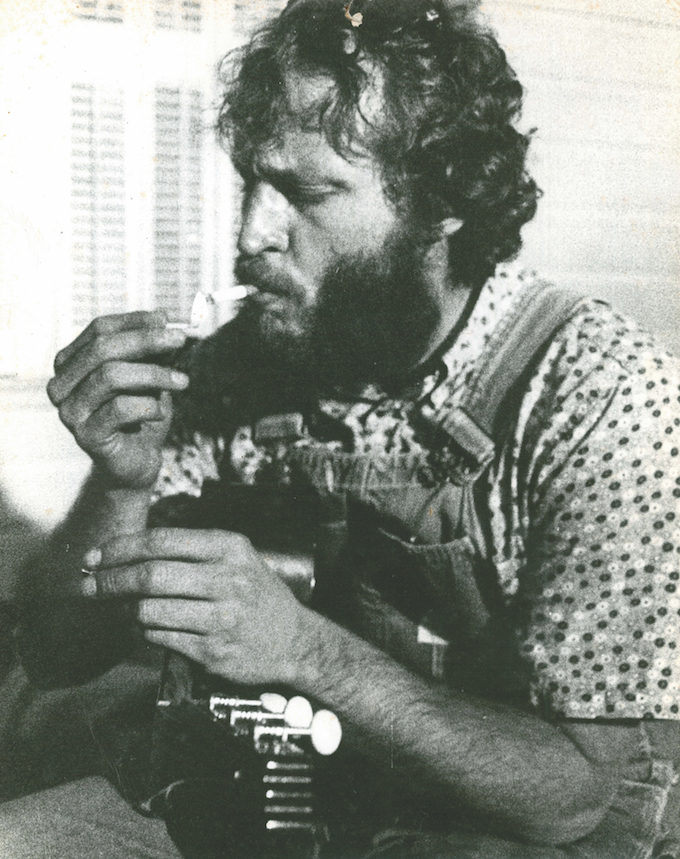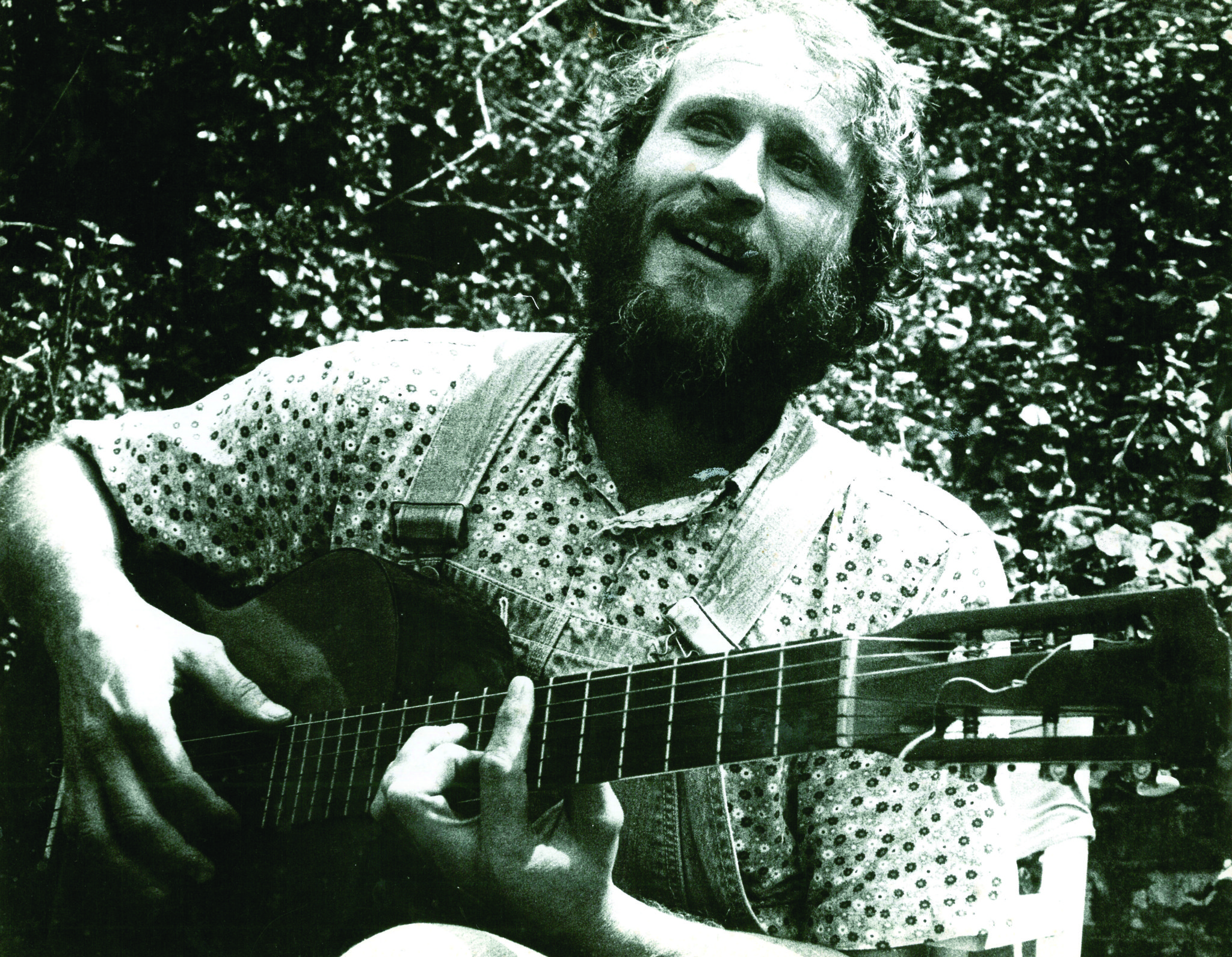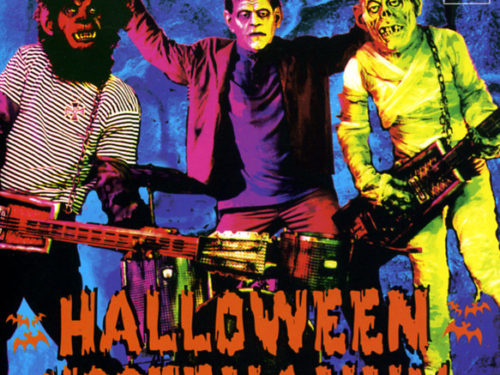Forgotten in his own time, Ford’s debut record is equal parts tall tale and soul-baring testimony. It now stands as the definitive country funk album
“In the back hills of Kentucky I was raised / In a shack on Big Bone Mountain / Born into poverty, bathed in misery / The times I went hungry you can’t count ‘em.”
From the outset, Jim Ford’s Harlan County boasts an explosive and eclectic sound. “I’m country funky,” he once labeled himself, and it is a perfect description for the record. With thick twang to boot, Ford begins spinning his life story, or at least a musically fictitious version of it. Released in 1969, the same year as countless other legendary records, Harlan County largely fell through the cracks. It is a unique record, not only because of its unexpected blend of genres, but also because of the mystery surrounding it. Jim Ford was and remains a mythic man. He was hard to pin down, as if he himself could have been a Paul Bunyan-like folktale figure. Harlan County is both intimately personal and steeped in the stuff of tall tales. It’s a melodramatic country funk odyssey, one that reflects the bittersweet tragedies that defined Ford’s own life and led to his death in 2007, when he was on the cusp of rediscovery. Harlan County provides a rare but telling look at the reclusive man who Sly Stone — a good friend — once called “the baddest white man on the planet.”
Born in a small coal-mining town in Paintsville, Kentucky, on August 23, 1941, Jim Ford was, by all accounts, a restless child, raised by his grandmother along with his eight other siblings. Determined to never work in the mines himself, he followed his father to Michigan at age 11, but, looking for warmer weather and new adventures, he soon caught a bus to New Orleans. He eventually wound up in Germany as part of the service for a few years and then went to California with ambition to be a musician.
Ford began writing and playing with Pat and Lolly Vegas, later of Redbone. The trio earned songwriting contracts and made a few 45s for small labels in the area. Ford quickly found success after Aretha Franklin recorded a version of his song “Niki Hoeky.” He then met agent Jerry Perenchio, who immediately liked the red-headed, bushy-bearded Kentuckian and gave him a blank check and complete creative liberty to make a record.
That record was Harlan County. Opening with the title track, a vivid recounting of Ford’s imagined life in a town based on his own, Ford’s debut album balances near-affectionate depictions of the characters and culture of his hometown and shouted prayers to the Lord to “take us out of Harlan County.” The song portrays a sense of feeling stuck in a small town, but Ford sings with just as much ferocity about getting out. Later on the album, “Working My Way to LA” takes on further autobiographical qualities. Ford is getting out of Harlan County, where he “never had a chance to make it.” He escapes, makes his way out west, and sings his story backed by arrangements that compromises none of the country roots and New Orleans influences he left behind.
Ford had his fair share of girlfriends, the most serious being Marlon Brando’s ex-wife Movita Castaneda, who he lived with for almost three decades. He helped to raise her two children from her marriage to Brando as an unofficial stepfather. On Harlan County, Ford displays some of that masculine bravado in the explosive “I’m Gonna Make Her Love Me.” He roars through the track with charismatic yelps and squeals. The song blends soul, funk, and gospel elements so seamlessly that you might imagine they had always gone together with country music like this. But Ford shows more of a sensitive side on the gentle “Love On My Brain.” The track ranges from subtle romance to stark self-reflection in lines like, “Some folks run from a little bit of love / Other folks run in the pain / I’ve run away from every place / Every track and every trace of every little thing.” In somewhat of a middle ground between the two, Ford presents a haunting, sweeping, romantic rendition of “To Make My Life Beautiful.” The dichotomy and range he exhibits on Harlan County’s love songs further add to the elusive complexity of Jim Ford.
The album flopped at the time of its release, leaving Ford disappointed and financially strapped. He took on any work he could find, starring in television commercials and even posing in a spaghetti Western-themed Playboy spread. Ford’s fortunes improved in 1972, finding great success when Bobby Womack released a cover of his song “Harry Hippie.” It should be no surprise that, with his songs being covered and performed by artists as stylistically far-ranging as Womack, Aretha Franklin, Bobbie Gentry, and Nick Lowe, that Ford is best remembered as a prolific songwriter. He later wrote sizable portions of Womack’s The Poet (1981) and The Poet II (1984) and composed every track of The Temptation’s Wings of Love (1976). Many of the popular artists who covered his songs, perhaps most famously Lowe, would prove his most passionate supporters in later years; However, Ford’s refusal to tour and his cocaine addiction depleted his royalties faster than he could replenish them. Songs on Harlan County like “Dr. Handy’s Dandy Candy” and the blues standard “Spoonful” provide a glimpse into his addiction, one he did not overcome until 2003.

“Where’s all the promise / Flash of lightnin’ / And all the truth / You say I’m supposed to see? / I wish for once you would just leave things be,” Ford sings in “Changin’ Colors.” This desire to leave things be would force Ford into self-imposed exile. As Travis Kitchens writes, “several attempts at a follow-up to Harlan County failed to materialize, as Ford proved too temperamental to complete anything. A visionary by nature, the compromises necessary to be transformed into a marketable pop star proved either undesirable or too difficult.” As Ford himself declared presciently on Harlan County, “There’s a long road ahead / I’m going to leave it all behind.” And he did.
****
In April 2006, Swedish music journalist L-P Anderson succeeded in doing what no one else had yet been able to do: track down Jim Ford. Anderson sent a letter to Ford’s trailer home in Fort Bragg, California, asking if he could come to visit and talk with him. In his obituary of Ford, Anderson writes of meeting him in his “modest” and unglamorous mobile home. Even in his isolation, Ford had continued to record. The floor was strewn with an overwhelming number of tapes and recordings he had made over the years. Ford explained to Anderson that he had the ability to “sit down and write two or three songs, lay down and have a beer, and get up an hour later and write two more.” Kitchens mentions that Ford was proud of his music, but didn’t miss the business or the drugs. “I was feeling like I got robbed over the years, which I did,” Ford said, “but it ain’t gonna bother me no more. I’m just gonna pick up and go on.”
With the appearance of Anderson, Ford was on the brink of a major career revival. They made a deal with German label Bear Family Records to release some of this material on a compilation, Sounds Of Our Time, as well as a rare demo collection, Point of No Return. A show was planned for May 2008 with Nick Lowe in London (Ford had recorded Lowe’s band Brinsley Schwarz in 1971, but the recordings were never released because of Ford’s own dissatisfaction with them). Ford was set to return to a world now ready to appreciate his masterwork Harlan County and devour the goldmine of material he had accumulated over the past few decades. But on November 18, 2007, Ford was found dead in his mobile home at 66 years old.
****
“Jim Ford has been described as otherworldly, and his charisma, humour and musical talents definitely were,” Anderson wrote in his obituary of Ford. “[His] legacy will live on.” There is some peace in knowing that Ford did get to see this appreciation of his unique and free-flowing talent in his last years. It is tragic that it had to come so late, and that he couldn’t really enjoy the fruits of this new enthusiasm for his work. However, we all benefit from this renewed interest in Jim Ford. As one of the most prolific yet unheralded songwriters of his era, there is an abundance of his work to discover and enjoy. Following the Bear Family releases, Harlan County was remastered and reissued by Light In the Attic in 2011. His debut record remains Ford’s crowning achievement, a blend of biography and fantasy that exemplifies its creator’s country sensibilities and genre-breaking musical mind.
While we are so lucky to have so many of Ford’s demos and unreleased material, one cannot help but wonder what a proper follow-up to Harlan County would have been like, what territory it may have explored. In tracks like “The Sounds of Our Time,” Ford is much more reserved. He is not as bombastic as the rollicking country funk of Harlan County, yet his songwriting is more searing. He is more cognizant of the bigger picture involving war, air pollution, and street violence, commenting on the world around him rather than weaving tales about a pseudo-fictional one. But Ford was an iconoclast to the end, and he never compromised. Perhaps we should be even more thankful for that. Harlan County is of a caliber and level of inventiveness that is truly rare — one many artists could only dream of reaching. It only improves with time. To have made a follow-up that failed to live up to the standards he set for himself with his debut just wouldn’t have been Jim Ford’s style.
Ford was aware that he was a man and artist constantly “under construction,” building a musical legacy that would outlive him, even while recording just for himself in his trailer. He died while still constructing it, but with the posthumous releases of his home demos and abandoned studio projects, we get to enjoy something close to the complete musical gospel according to Jim Ford. Looking back on Harlan County in tandem with its creator’s life, it becomes clear that it is the testimony of a mysterious man baring his soul within stories that could very well be myth. That is the true triumph of Harlan County. It perfectly embodies an incredibly complex and elusive man. Jim Ford reveals his secrets in Harlan County, but he has a heck of a time blurring the line between his reality and his legend.
Stay up to date with all things Split Tooth Media and follow Breanna on Twitter
(Split Tooth may earn a commission from purchases made through affiliate links on our site.)




